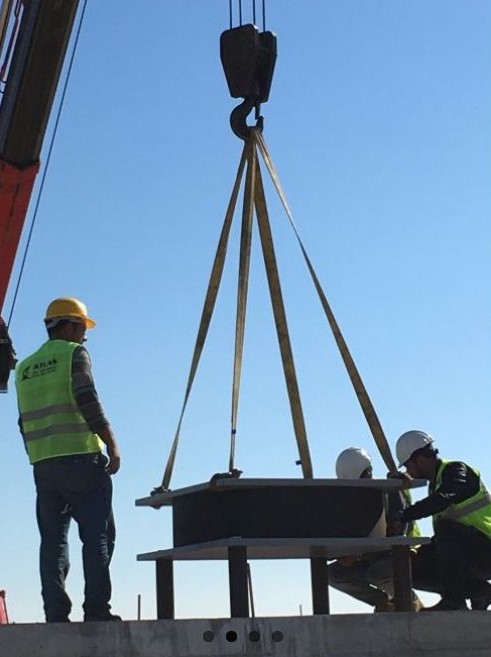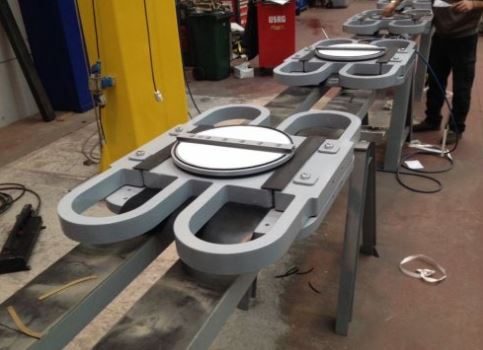Antiseismic Devices

Elastoplastic Bearings
Devices with nonlinear behaviour (NDL) in displacement dependent steel are metal retainers, which use the hysteretic properties of the material to dissipate energy. They consist of a series of steel elements designed to deform plastically under seismic action. The RED type, made with crescent moon elements has a unidirectional configuration, so it acts in a single horizontal direction. The AIOS type is a combination of fixed elastomeric disc bearings and hysteretic steel elements. The ‘C’ shaped steel elements acting as dissipators, may be placed in one horizontal direction only or in both, thus providing the device with unidirectional or bidirectional behaviour. Hysteretic dissipative bracing is often used for retrofitting and seismic improvement of existing buildings, applying passive protection to the building that increases the strength and rigidity of the structure.


